Savannah Thais
Princeton University
Equivariance Is Not All You Need: Characterizing the Utility of Equivariant Graph Neural Networks for Particle Physics Tasks
Nov 06, 2023Abstract:Incorporating inductive biases into ML models is an active area of ML research, especially when ML models are applied to data about the physical world. Equivariant Graph Neural Networks (GNNs) have recently become a popular method for learning from physics data because they directly incorporate the symmetries of the underlying physical system. Drawing from the relevant literature around group equivariant networks, this paper presents a comprehensive evaluation of the proposed benefits of equivariant GNNs by using real-world particle physics reconstruction tasks as an evaluation test-bed. We demonstrate that many of the theoretical benefits generally associated with equivariant networks may not hold for realistic systems and introduce compelling directions for future research that will benefit both the scientific theory of ML and physics applications.
Equivariant Graph Neural Networks for Charged Particle Tracking
Apr 11, 2023


Abstract:Graph neural networks (GNNs) have gained traction in high-energy physics (HEP) for their potential to improve accuracy and scalability. However, their resource-intensive nature and complex operations have motivated the development of symmetry-equivariant architectures. In this work, we introduce EuclidNet, a novel symmetry-equivariant GNN for charged particle tracking. EuclidNet leverages the graph representation of collision events and enforces rotational symmetry with respect to the detector's beamline axis, leading to a more efficient model. We benchmark EuclidNet against the state-of-the-art Interaction Network on the TrackML dataset, which simulates high-pileup conditions expected at the High-Luminosity Large Hadron Collider (HL-LHC). Our results show that EuclidNet achieves near-state-of-the-art performance at small model scales (<1000 parameters), outperforming the non-equivariant benchmarks. This study paves the way for future investigations into more resource-efficient GNN models for particle tracking in HEP experiments.
Data Science and Machine Learning in Education
Jul 19, 2022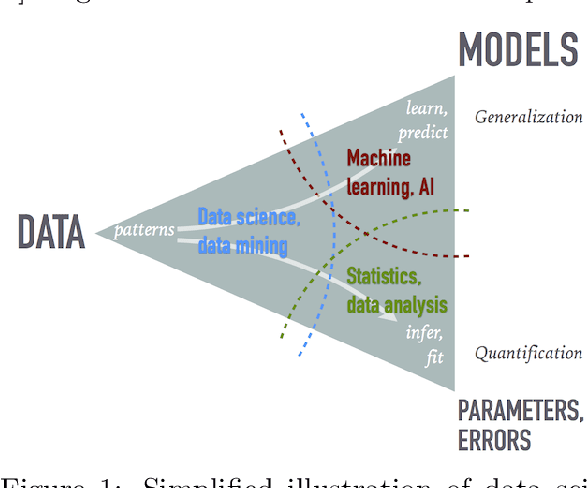
Abstract:The growing role of data science (DS) and machine learning (ML) in high-energy physics (HEP) is well established and pertinent given the complex detectors, large data, sets and sophisticated analyses at the heart of HEP research. Moreover, exploiting symmetries inherent in physics data have inspired physics-informed ML as a vibrant sub-field of computer science research. HEP researchers benefit greatly from materials widely available materials for use in education, training and workforce development. They are also contributing to these materials and providing software to DS/ML-related fields. Increasingly, physics departments are offering courses at the intersection of DS, ML and physics, often using curricula developed by HEP researchers and involving open software and data used in HEP. In this white paper, we explore synergies between HEP research and DS/ML education, discuss opportunities and challenges at this intersection, and propose community activities that will be mutually beneficial.
Graph Neural Networks in Particle Physics: Implementations, Innovations, and Challenges
Mar 25, 2022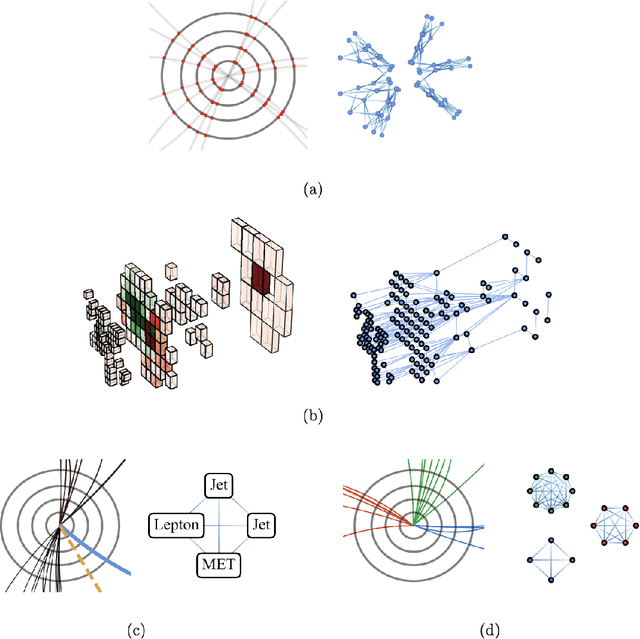
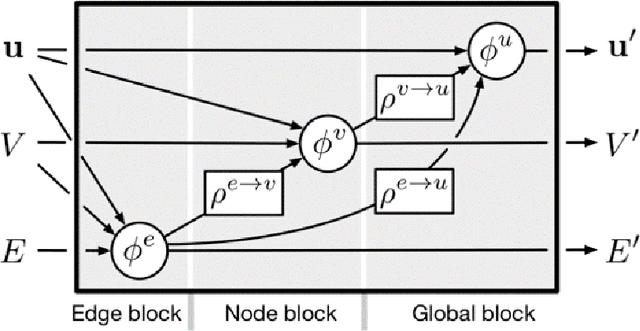
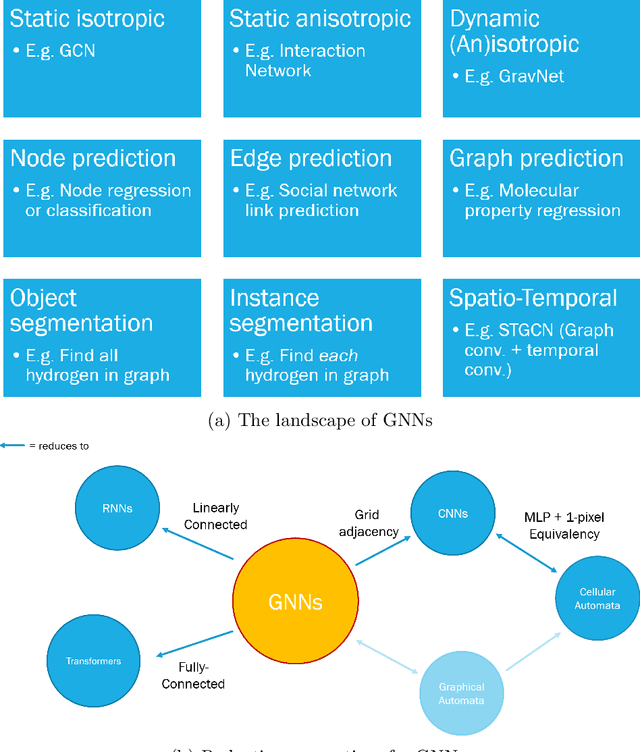
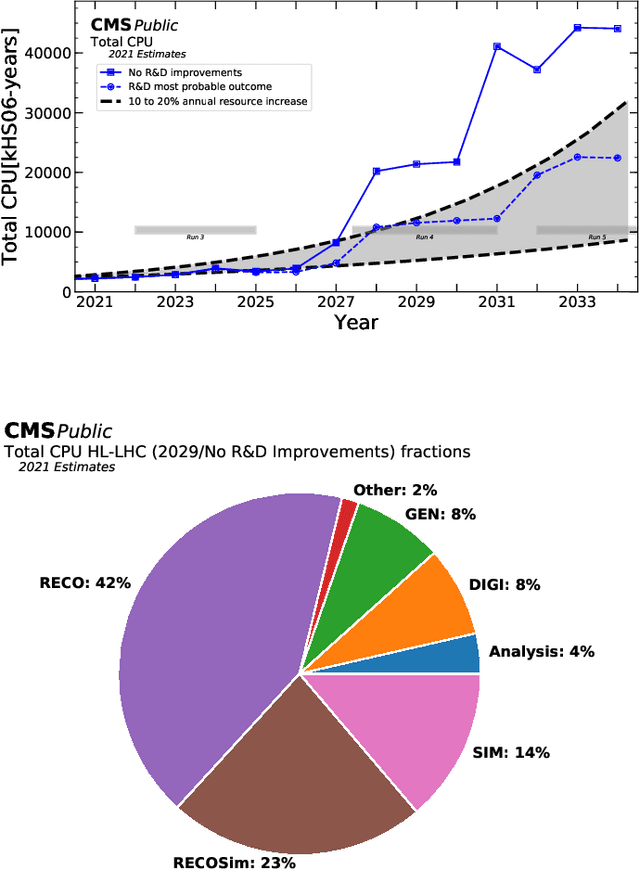
Abstract:Many physical systems can be best understood as sets of discrete data with associated relationships. Where previously these sets of data have been formulated as series or image data to match the available machine learning architectures, with the advent of graph neural networks (GNNs), these systems can be learned natively as graphs. This allows a wide variety of high- and low-level physical features to be attached to measurements and, by the same token, a wide variety of HEP tasks to be accomplished by the same GNN architectures. GNNs have found powerful use-cases in reconstruction, tagging, generation and end-to-end analysis. With the wide-spread adoption of GNNs in industry, the HEP community is well-placed to benefit from rapid improvements in GNN latency and memory usage. However, industry use-cases are not perfectly aligned with HEP and much work needs to be done to best match unique GNN capabilities to unique HEP obstacles. We present here a range of these capabilities, predictions of which are currently being well-adopted in HEP communities, and which are still immature. We hope to capture the landscape of graph techniques in machine learning as well as point out the most significant gaps that are inhibiting potentially large leaps in research.
Symmetry Group Equivariant Architectures for Physics
Mar 11, 2022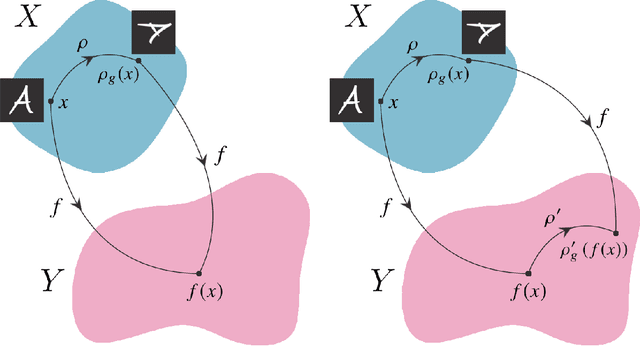
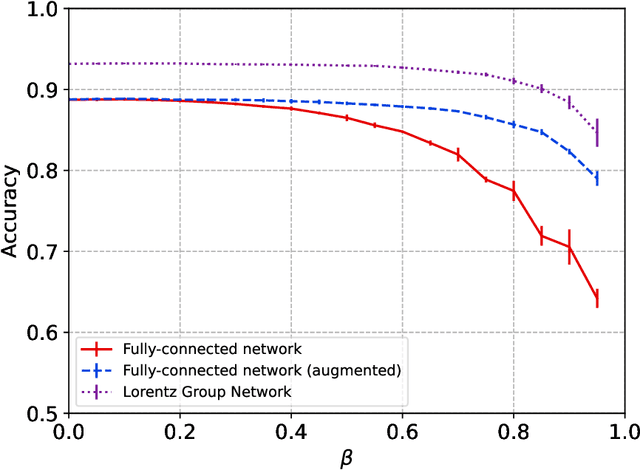
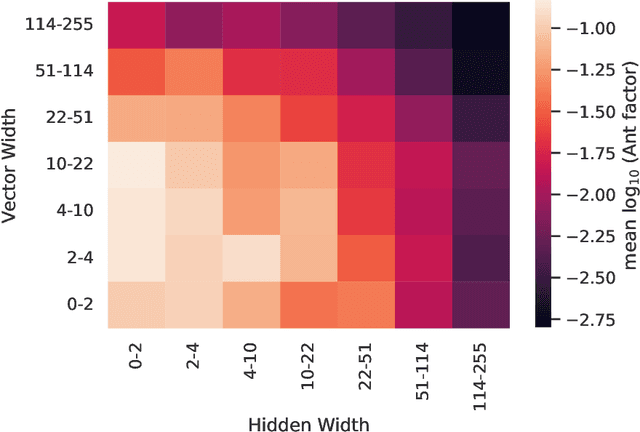
Abstract:Physical theories grounded in mathematical symmetries are an essential component of our understanding of a wide range of properties of the universe. Similarly, in the domain of machine learning, an awareness of symmetries such as rotation or permutation invariance has driven impressive performance breakthroughs in computer vision, natural language processing, and other important applications. In this report, we argue that both the physics community and the broader machine learning community have much to understand and potentially to gain from a deeper investment in research concerning symmetry group equivariant machine learning architectures. For some applications, the introduction of symmetries into the fundamental structural design can yield models that are more economical (i.e. contain fewer, but more expressive, learned parameters), interpretable (i.e. more explainable or directly mappable to physical quantities), and/or trainable (i.e. more efficient in both data and computational requirements). We discuss various figures of merit for evaluating these models as well as some potential benefits and limitations of these methods for a variety of physics applications. Research and investment into these approaches will lay the foundation for future architectures that are potentially more robust under new computational paradigms and will provide a richer description of the physical systems to which they are applied.
Semi-Equivariant GNN Architectures for Jet Tagging
Feb 14, 2022
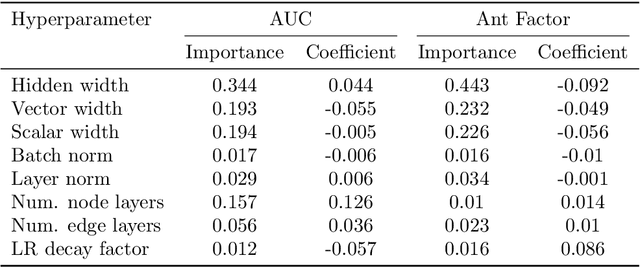

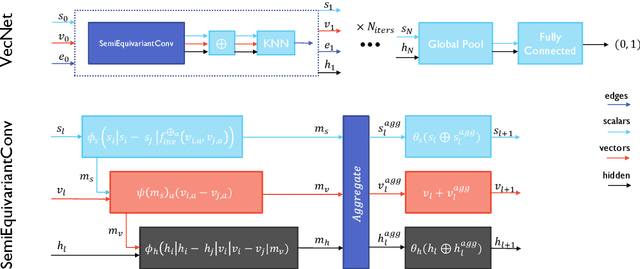
Abstract:Composing Graph Neural Networks (GNNs) of operations that respect physical symmetries has been suggested to give better model performance with a smaller number of learnable parameters. However, real-world applications, such as in high energy physics have not born this out. We present the novel architecture VecNet that combines both symmetry-respecting and unconstrained operations to study and tune the degree of physics-informed GNNs. We introduce a novel metric, the \textit{ant factor}, to quantify the resource-efficiency of each configuration in the search-space. We find that a generalized architecture such as ours can deliver optimal performance in resource-constrained applications.
Graph Neural Networks for Charged Particle Tracking on FPGAs
Dec 03, 2021

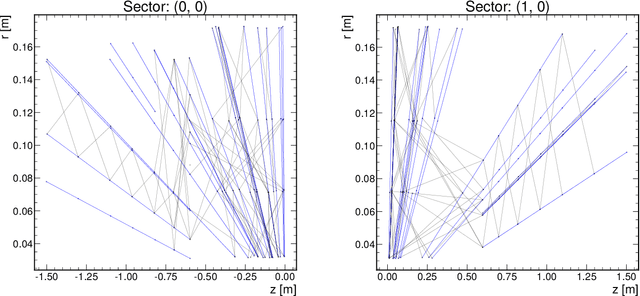
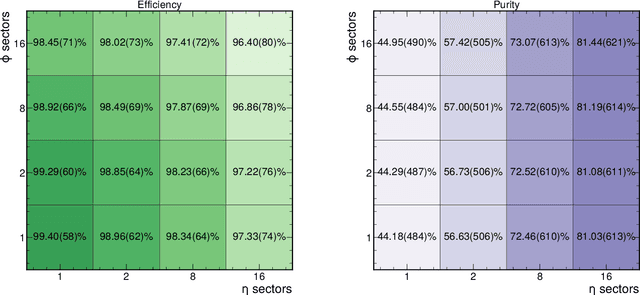
Abstract:The determination of charged particle trajectories in collisions at the CERN Large Hadron Collider (LHC) is an important but challenging problem, especially in the high interaction density conditions expected during the future high-luminosity phase of the LHC (HL-LHC). Graph neural networks (GNNs) are a type of geometric deep learning algorithm that has successfully been applied to this task by embedding tracker data as a graph -- nodes represent hits, while edges represent possible track segments -- and classifying the edges as true or fake track segments. However, their study in hardware- or software-based trigger applications has been limited due to their large computational cost. In this paper, we introduce an automated translation workflow, integrated into a broader tool called $\texttt{hls4ml}$, for converting GNNs into firmware for field-programmable gate arrays (FPGAs). We use this translation tool to implement GNNs for charged particle tracking, trained using the TrackML challenge dataset, on FPGAs with designs targeting different graph sizes, task complexites, and latency/throughput requirements. This work could enable the inclusion of charged particle tracking GNNs at the trigger level for HL-LHC experiments.
Applications and Techniques for Fast Machine Learning in Science
Oct 25, 2021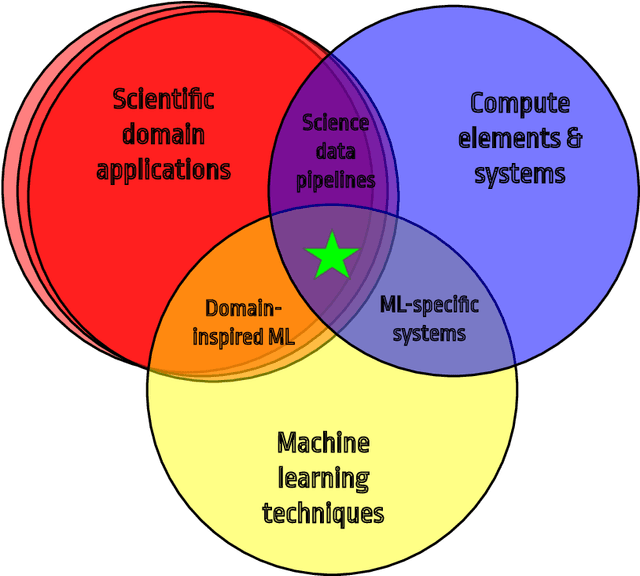
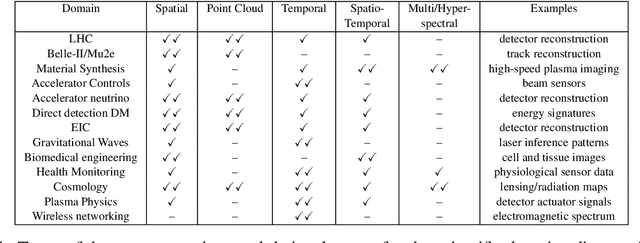
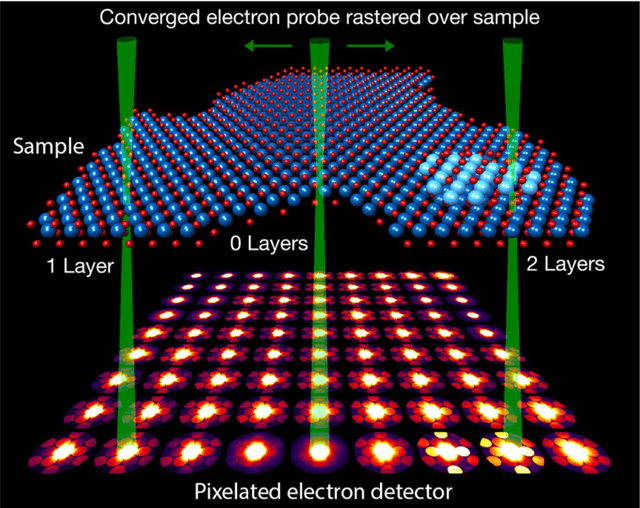

Abstract:In this community review report, we discuss applications and techniques for fast machine learning (ML) in science -- the concept of integrating power ML methods into the real-time experimental data processing loop to accelerate scientific discovery. The material for the report builds on two workshops held by the Fast ML for Science community and covers three main areas: applications for fast ML across a number of scientific domains; techniques for training and implementing performant and resource-efficient ML algorithms; and computing architectures, platforms, and technologies for deploying these algorithms. We also present overlapping challenges across the multiple scientific domains where common solutions can be found. This community report is intended to give plenty of examples and inspiration for scientific discovery through integrated and accelerated ML solutions. This is followed by a high-level overview and organization of technical advances, including an abundance of pointers to source material, which can enable these breakthroughs.
Charged particle tracking via edge-classifying interaction networks
Mar 30, 2021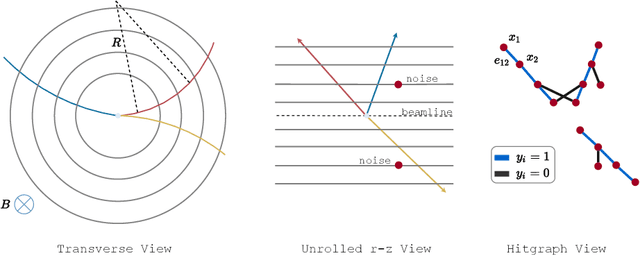


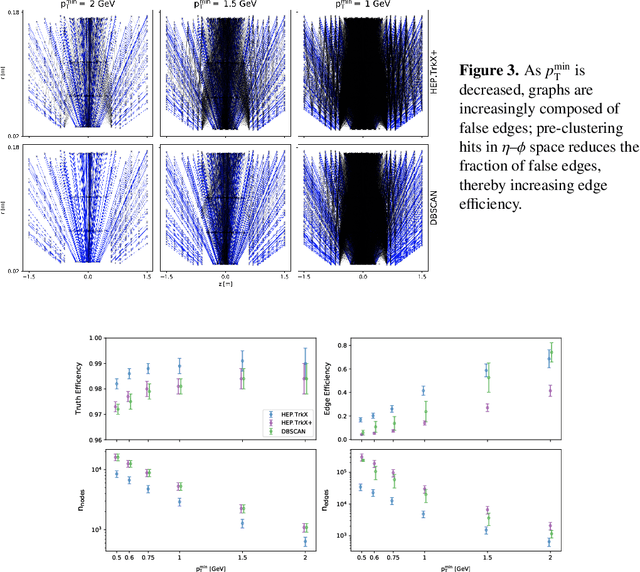
Abstract:Recent work has demonstrated that geometric deep learning methods such as graph neural networks (GNNs) are well-suited to address a variety of reconstruction problems in HEP. In particular, tracker events are naturally represented as graphs by identifying hits as nodes and track segments as edges; given a set of hypothesized edges, edge-classifying GNNs predict which correspond to real track segments. In this work, we adapt the physics-motivated interaction network (IN) GNN to the problem of charged-particle tracking in the high-pileup conditions expected at the HL-LHC. We demonstrate the IN's excellent edge-classification accuracy and tracking efficiency through a suite of measurements at each stage of GNN-based tracking: graph construction, edge classification, and track building. The proposed IN architecture is substantially smaller than previously studied GNN tracking architectures, a reduction in size critical for enabling GNN-based tracking in constrained computing environments. Furthermore, the IN is easily expressed as a set of matrix operations, making it a promising candidate for acceleration via heterogeneous computing resources.
Physics and Computing Performance of the Exa.TrkX TrackML Pipeline
Mar 11, 2021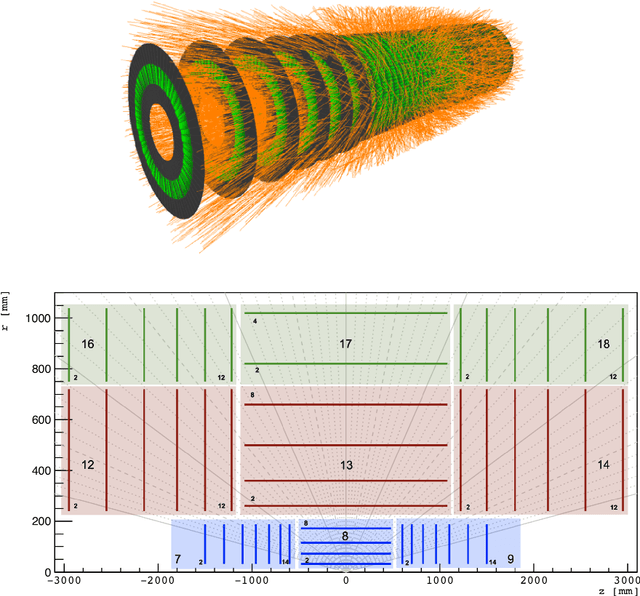
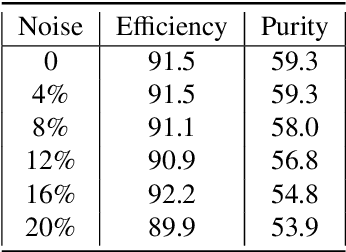
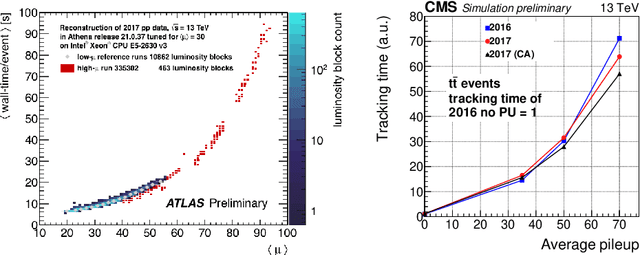
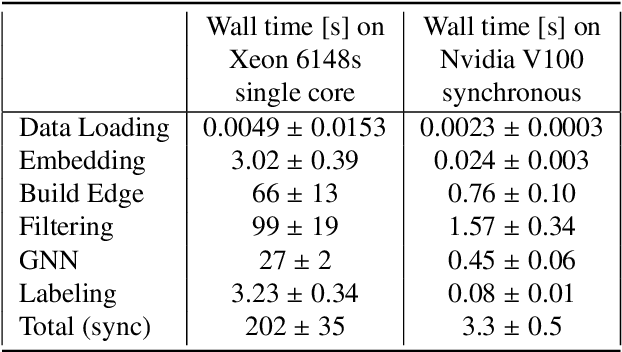
Abstract:The Exa.TrkX project has applied geometric learning concepts such as metric learning and graph neural networks to HEP particle tracking. The Exa.TrkX tracking pipeline clusters detector measurements to form track candidates and filters them. The pipeline, originally developed using the TrackML dataset (a simulation of an LHC-like tracking detector), has been demonstrated on various detectors, including the DUNE LArTPC and the CMS High-Granularity Calorimeter. This paper documents new developments needed to study the physics and computing performance of the Exa.TrkX pipeline on the full TrackML dataset, a first step towards validating the pipeline using ATLAS and CMS data. The pipeline achieves tracking efficiency and purity similar to production tracking algorithms. Crucially for future HEP applications, the pipeline benefits significantly from GPU acceleration, and its computational requirements scale close to linearly with the number of particles in the event.
 Add to Chrome
Add to Chrome Add to Firefox
Add to Firefox Add to Edge
Add to Edge